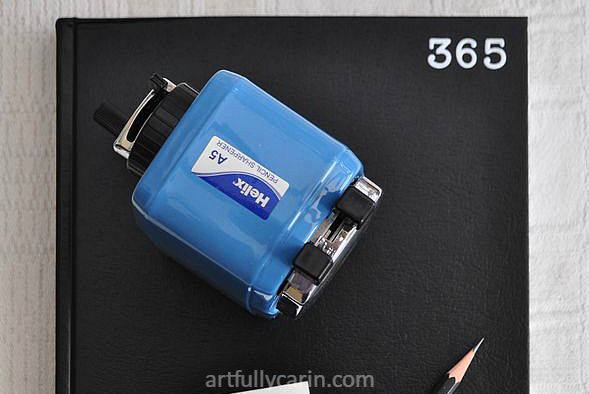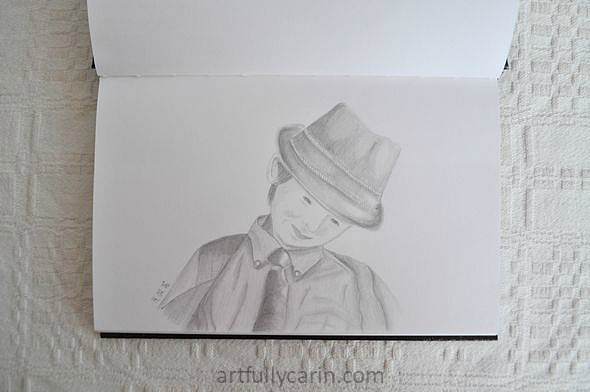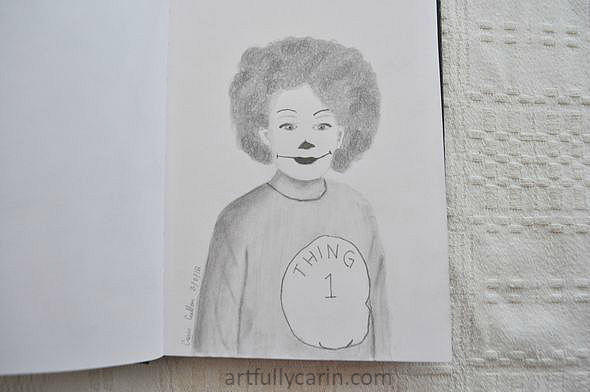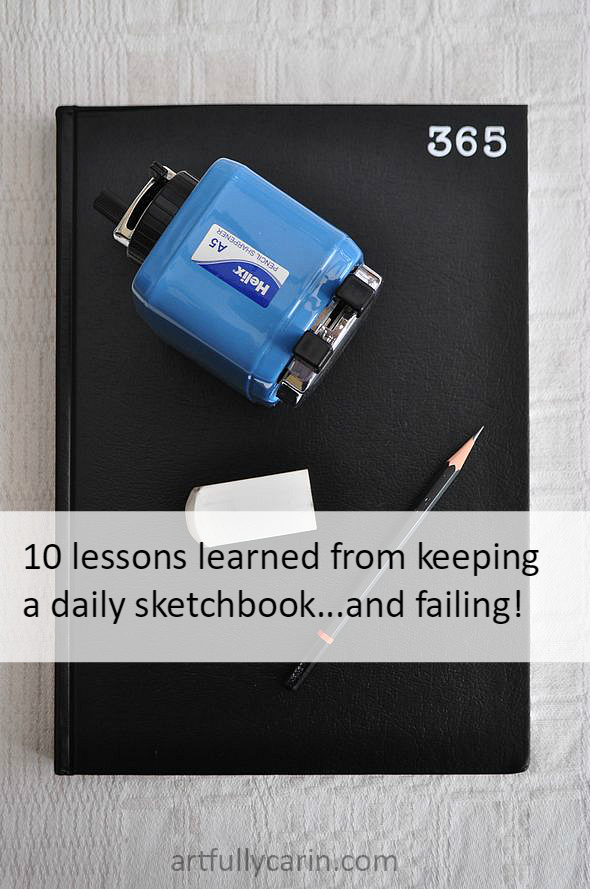I love the idea of keeping a daily sketchbook. I used to draw every day when I was younger and really enjoyed it. I also saw great improvements from sketchbook to sketchbook. It spurred me on and made me realise how important regular, persistent practice is.
I’ve tried to pick the habit back up in the past few years, but not gotten very far. This year, health and family issues stopped me in my tracks before I even had a chance to get going. After months away, I’m now finally gearing up to start another daily sketchbook. To make it extra special, I’ve decided to make it a 365 project from birthday to birthday. It’s more pressure for sure, but right now that’s what I need to get back into it properly.
While I wasn’t drawing, I had plenty of time to think about where I’ve gone wrong in the past, how I should go about it this time, and what I need to do to stickto it. If you want to get into a daily drawing habit, this may be helpful for you too.
1. Focus on things you love.
If you focus on the things you love and are interested in, you are much more likely to keep up the habit every day. Choose a few things that mean a lot to you and work them the best you can, in as many ways as you can.
If you are unsure of your artistic style, you are also much more likely to find it by drawing what you love repeatedly.
During my time away from the blog and drawing I was obsessed with finding my style, in life and in art. I was on a mission to hone in on my true decorating style. Seeing so many great styles online, I was a bit confused. As luck would have it, I found that many of the buzz words I want to use when decorating my home, I also want to develop in my drawing; simplicity, layering, texture, and high contrast. I will get there by consistently drawing what I love; family and friends, nature and botanical drawings.
2. Don’t label your sketchbook.
It seems logical to have different sketchbooks for different things. One for nature studies, one for portraits, and so on. But in my experience nothing kills creativity faster. Having to locate the right sketchbook for the right thing at the right time kills the momentum and is an easy way out. If you focus on subjects you love, the sketchbook will still have a cohesive feel, a theme, because there will be repeating patterns. It will also be much more interesting to look back on because every new page will be a surprise.
3. Keep the sketchbook handy.
Keep it where you will use it. You don’t want to have to go hunting for it every time you want to draw. Do you plan to draw in the car while waiting for the kids to get out of school or after school clubs? Stick it in your bag, or in the glove box. Do you plan to draw curled up on the sofa while having your morning cuppa? Stick it on a table or shelf nearby.
Some people have several favourite places to draw and keep sketchbooks in all of them. I keep two- one in the studio, one in the house. In my experience, more than that gets confusing. You have more stuff to keep track of, it’s harder to see progress, and the sketchbooks take too long to fill. And that feeling of seeing your sketchbook fill up before your eyes is really rewarding.
4. Use supplies that give fast results.
I’m the first to admit that I can be a bit precious about sketchbooks. It’s only natural. I put a lot of work into them. Saying that, if you’re constantly putting off sketching because you are worried about things like smudging, drying times or having to clean up messes, you may not be using the right medium. Take some time up front to decide what mediums will work best for you.
For me it’s graphite pencils all the way. They’re my first and true love.
5. Not every drawing has to be a finished piece of art
Yikes! This is my major downfall. I’m detail orientated and want every drawing to look just so. But the whole point of a sketchbook is to be able to experiment and sketch down impressions, ideas and gestures. I now aim for a mixture of rough sketches and fully finished drawings depending on what mood I’m in and how much time I’ve got. As it turns out, that mixture is more visually interesting anyway.
6. Draw at roughly the same time every day.
If you wait till you have the time, you’ll never find it. Schedule it in so you have something to look forward to every day. Concentrate on once a day to begin with, especially if you have other commitments. It may not always work out, but the expectation is there.
I’m scheduling sketchbook time in as part of my morning routine. It ensures I don’t spend too long on it or get too bogged down with details since I have other things to do in a day. Extra time at the weekend and in school holidays is a bonus.
7. Date all the drawings.
Your daily drawings are a record of what’s important to you right now. It’s fun to look back on old sketchbooks to see what you got up to or were into a few years ago, or see what progress you’ve made. Dating them helps you in the future.
8. Don’t be afraid to add notes and references photos
Adding notes, or cutting and pasting pictures into your sketchbooks will not destroy them, but add interest. Even if your drawing looks nothing like the reference photo, it will show your progress over time or help you find your artistic style.
I never used to add things to my sketchbook because I was afraid it would ruin all my hard work. I then realised I didn’t trust that I’d be able to draw the same subject as well again. I had to let go of that way of thinking fairly quickly or it would hold me back. Notes and reference photos usually help you when you want to revisit something later, or turn it into a “proper” drawing.
9. Share your progress.
Your sketchbook can be as private as you want, but in my experience you usually get on better when you share it with someone who’s genuinely interested. The interest and feedback keeps you motivated. It doesn’t have to be daily, but regular enough that you don’t give up if have a couple of bad days. If you don’t have someone in your life who would appreciate it, there are plenty of Facebook sketchbook groups that would welcome you. You also set up a separate Instagram account and start following people who do similar things (you can find me here).
10. It’s okay to miss a day.
I feel like I should whisper this one. The whole point of a daily sketchbook is that it’s daily, right?!
This time I’m planning on doing a 365 project. I want to draw 365 days straight, even if it’s just a very rough sketch. Most of the time though, keeping a daily sketchbook is about building a sustainable long-term habit that may go on for years. It’s unreasonable to expect not to miss a day here and there. The most important thing is to pick it back up as quickly as possible and carry on as if nothing has happened. Unless, of course, your name is Carin and you decide to write a blog post about it!
Bonus tip- join challenges.
So you may not want to do a 365 project, but there are plenty of other sketch challenges out there that can give you a boost whenever you need one. If you start to struggle, or lack motivation, a challenge may be just what you need to keep going.
Hope these lessons and tips have been helpful. Have you ever kept a daily sketchbook or would you consider keeping one?





I’m so pleased to see you back!
I used to be quite good at drawing, then I didn’t draw for years and now I can barely manage a respectable stick man. Practise really does make perfect I think. You’re such a talented artist and it’s obvious you get pleasure from it, I’m glad you’re continuing to persue it. I look forward to seeing your sketches on instagram xx
Thanks Louisa! And I hope to see you up and running with the new blog soon. Have you ever thought of quickly sketching what your kids get up to, or their favourite toys and the like? That’s how I got back into it. Toys are good, because they don’t move 😉 I’d even be inclined to sketch the house reno.
Some these tips can apply to writing, and even photography . Those are two things that fuel my creative life, and even though it doesn’t have to be rigid, there’s value in the discipline of a routine. Being in a rhythm feels good!
I can see that, now that you say it. I did a 365 photo project a few years ago and it was great. I didn’t feel I could fit anything else in at the time, but I could manage one photo since it took seconds. That’s how I learned to use my camera in manual (somewhat- I still have so much to learn!). And yes, rhythm feels good!